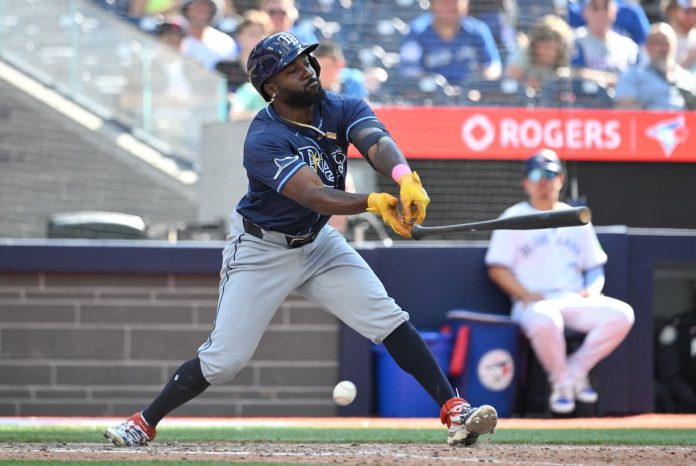This article is a submission for the Soccerlens Football Writing Competition; to participate, please read the details here.
Written by David Rini.
The most eye-opening component of being a fan of U.S. soccer (I’m not really trying to break myself of the habit of calling it that yet, so apologies all around) is learning just how many of us seem to have dual- or triple-citizenship. We must, based on the number of Americans who support national teams other than our own. My dad and brother both pulled for Italy in the World Cup last year. My mom went the other direction, for France. Virtually no one in my own family unit pulled for the U.S. Ignore the fact that my family is about as Italian as Papa Gino’s and that my maternal family tree starts in Canada and ends in the awesomely French territory of…also Canada (vive Québécois!)
Why do Americans do this? If we don’t outright ignore our own team completely in favor of some allegiance to an ethnicity or nationality to which we no longer belong, many of us “adopt” another country’s team because we are too ashamed/bored/indifferent to watch our own.
I can’t exempt myself from this unusual display of un-patriotic fervor. After the U.S. – Italy game of the Cup, I was itching to get to a park and kick about with some of my people, but I had to get a new ball because my old one had finally been laid to rest after an unfortunate accident with the city of Boston’s public transportation system. I ran down to my local sporting goods provider and found myself a good, solid ball that was cheap and new…and had the colors of El Tri, theoretically the U.S.’s greatest soccer rival. When trying to explain myself to the checkout girl, who surprisingly was also a fan of the beautiful game, I stammered some line about the ball being inexpensive or easy to see with its reflective decals. Neither of these excuses were even remotely possible; the ball is exactly the same color as grass (with the exception of the giant red “MEXICO” scrawled across it), and it wasn’t the least expensive ball there. The truth was that Mexico is my “adopted” country, my second national team, and the one that usually provides the better catharsis for my soccer-watching time.
Does this happen in other countries? I can’t find similarities to other U.S. national teams. We celebrate the achievements of other American sporting legends over international competition – Jesse Owens at the 1936 Olympics and the “Miracle on Ice” in 1980, just to name the two that stick out in my mind most – so I can’t attribute this behavior to a trend of ignoring national team effort across the athletic board.
It’s also not as if most U.S. sports fans are franchise-bigamists in general. In my own home, Boston, loyalty to the local sports clubs is a way of life. The best die-hard Red Sox fans can probably compete comfortably with the supports of any Premiership club in the “Who’s life is more driven by somewhat pathetic, although vaguely inspiring and cute when discussed in Nick Hornby’s book or the movie based off of Nick Hornby’s book, sporting obsessions as interpreted through the lens of the local club” world championship. And with practically an eternity of pain between titles, and a seemingly invincible opponent for a major rival, most Red Sox fans (aside from the colors they wear), are probably indistinguishable from Man City supporters. Unless they were no good, fly-by-night fans who hate all that’s beautiful in the world and cheat on their income taxes and vote Republican, no reasonable Bostonian would ever root for the New York Yankees. Why is it, then, that the U.S. national soccer team, which offers arguably more opportunities for nationalistic pride than any other sports (it certainly plays more games against international opponents than any other national team) doesn’t get the same level of support? When international soccer is so often an expression of a country’s national spirit, why don’t we support ours?
Because the U.S. national team doesn’t reflect our national spirit, I would argue. For a huge majority of the soccer powerhouses around the world, the game they play is a style that represents strong aspects of the culture or idealized culture of the country. As a result, we get England’s stiff-upper lip approach to the game, Brazil’s Joga Bonita, and the ‘total soccer’ of the open and liberal Dutch. These countries have emotional and cultural cache invested in not only playing and winning soccer matches, but doing it in a certain way. The U.S. doesn’t have that. The Stars and Stripes, if we can be said to have any style at all, can be described as hard-working but somewhat lost and disorganized. Sure, some people will say that represents the U.S. in today’s world, but most U.S. citizens probably don’t have that same image.
Bill Simmons at ESPN has written regularly that Americans don’t want to see second- and third-tier athletes plying their trade, and that’s why the MLS will never take off as a major league here. We only want to see the best. Unfortunately, right now the U.S. team is most decidedly not the best. To be fair, our team isn’t terrible by any means – the last 17 years have shown the world that, by and large, the U.S. can compete with the soccer nations of our planet. We can’t usually win against the best ones, but at least we can compete. Most of us, though, don’t want the U.S. to compete – we want to dominate. Coverage of the Olympics in U.S. newspapers and television is overly concerned with “medal races,” where we can compare ourselves directly to other nations of the globe to see how much better we are doing than them in acquiring gold and silver medals (in simple and easy to read graphs, as well!) During the Cold War, if we could get more medals than the Soviets, we could somehow prove that our cultural and economic system was superior. The U.S. public in general began to feel as if dominance itself was a style for sporting success. Dominance itself may have become style of play that we feel best represents our national character – consistent and overwhelming success.
When the U.S. doesn’t, or can’t dominate competition, we sort of tune it out. I don’t remember seeing a lot of international formula-1 racing on TV, even though we’ve held races in the U.S. since 1999. I don’t remember seeing much about the U.S. rugby team, or the U.S. cricket team, either, although I’m sure that they compete regularly. Every year that Lance Armstrong won the Tour de France, though, you can bet the American public knew about it.
In order for the U.S. national team to reclaim its rightful spot as the prime object for support among U.S. soccer fans, it needs to tap into our feelings of nationalism and national character. If dominance is the most pivotal sporting attribute, though to represent the U.S., how do we make a team, then, that more accurately reflects our national character when we don’t have the players to steamroll our opposition? In my mind, the key to success is to find other aspects of the U.S.’s cultural soul and tap into those instead. If dominating our opponents is not an option for us (and unless Jozy Altidore is secretly a lot better than I think he is, it’s not), then the U.S. team should find other ways to represent values that are important to the country, instead. Rooting for other countries’ teams can never provide this type of shared cultural experience (unless you really do have dual citizenship).
We have at least one good entry point there: the U.S. team, and our spread of players, actually does look a lot like the U.S. Altidore, Adu, Onyewu, Johnson (when he’s playing), Ching, Gomez – this team has, potentially, a lot of racial diversity. That alone makes the U.S. team look different than a lot of other teams around the world, but at the same time, very American as well. Presenting the team as an accurate snapshot of the American populace makes it accessible to everyone, for no other reason than its commitment to diversity – and if watching and supporting the U.S. team more visibly lets me advertise my commitment to that value, maybe I’ll be more likely to leave the other countries on the backburner.
This article is a submission for the Soccerlens Football Writing Competition; to participate, please read the details here.
Add Sportslens to your Google News Feed!






